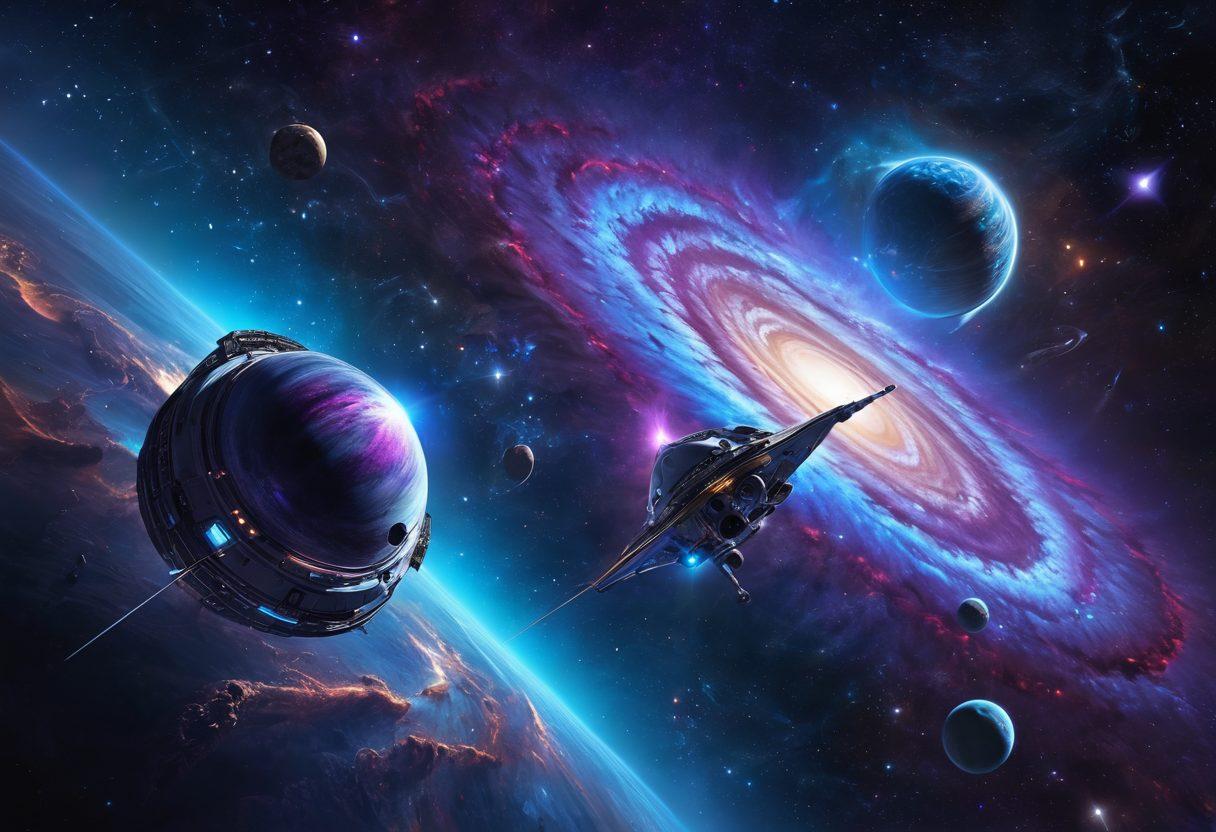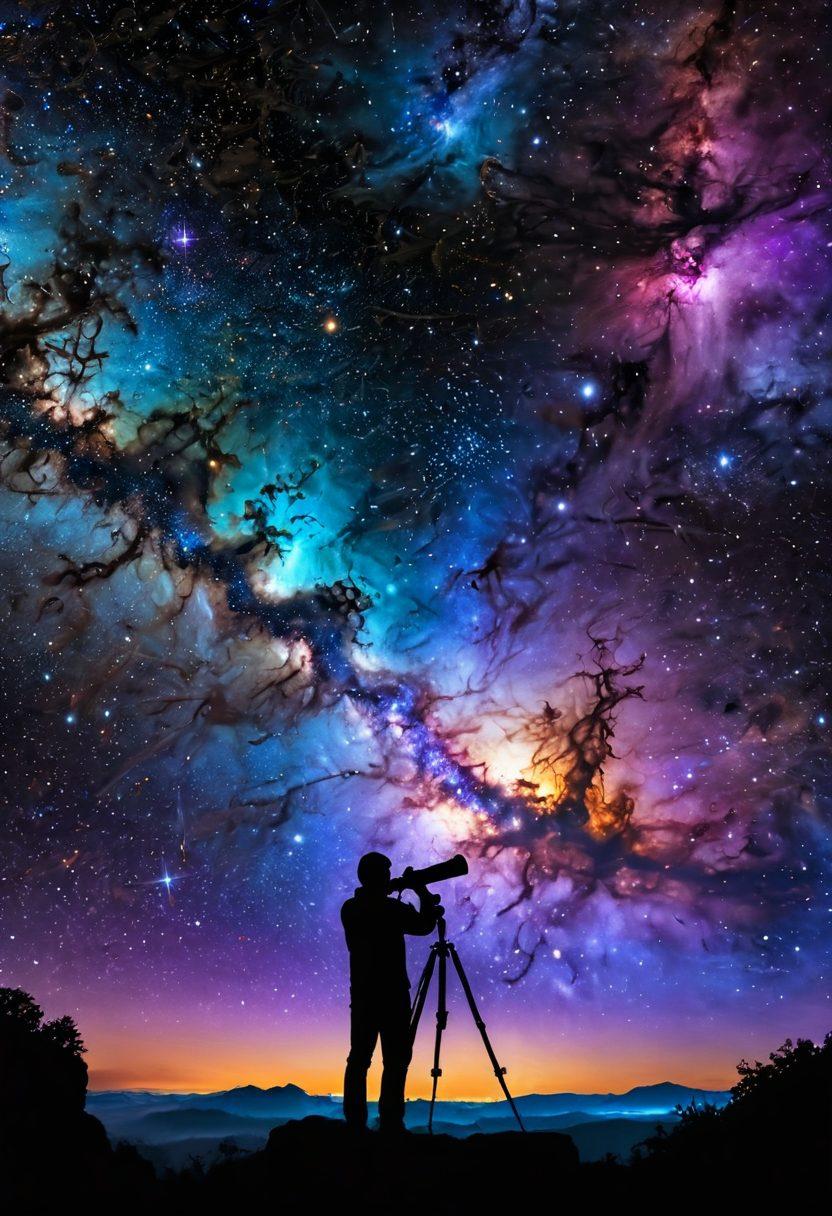Exploring the Cosmos: Unveiling the Mysteries of Space Travel and Astrophysics
Imagine standing on a distant celestial body, gazing at the vastness of space, far beyond our beloved Milky Way. This isn’t just the stuff of science fiction; it's the exciting realm of modern space technology that makes intergalactic exploration possible. The crescent of a new era in space travel is upon us, and as we unveil the mysteries of our universe through astrobiology, cosmology, and observational astronomy, we're reminded of our innate curiosity. What incredible cosmic discoveries lie waiting for us beyond the shimmering stars?
As we embark on this journey beyond the Milky Way, we find ourselves at the forefront of groundbreaking advancements in aerospace and space missions. The latest innovations in space technology are not merely tools for astronomers and researchers; they are conduits for humanity's quest to understand cosmic phenomena. Consider the remarkable achievements of NASA and other agencies around the world—how their deep space missions have transformed our understanding of celestial bodies and the universal laws that govern them. How do these missions reshape our sense of belonging in the universe?
In the realm of stellar phenomena, the significance of space telescopes cannot be overstated. These powerful instruments act as our cosmic eyes, peering into the farthest reaches of space and time. Just imagine: the light captured from billions of years ago graces the lenses of these telescopes today, revealing the secrets of the universe's past. What do these mysteries tell us about the origins of life and the possibilities of extraterrestrial existence? Each observation sparks questions, driving scientific research to unveil connections we have yet to understand.
Moreover, planetary science plays a pivotal role in our exploration of deep space. The study of planets, moons, and asteroids within our solar system informs us about others that lie far beyond our reach. By analyzing their atmospheres, compositions, and potential for supporting life, we gather clues about how our own planet fits into the grand cosmic puzzle. How can we better prepare for potential space travel to these distant worlds? Today, our endeavors not only focus on understanding existing celestial bodies but also on safeguarding our Earth for future generations.
So, as we journey through the cosmos, we must ask ourselves: how will the impact of space technology on modern exploration reshape the future of humanity? With each leap forward, we unlock new realms of possibility, fueling our dreams and ambitions. From the majestic rings of Saturn to the icy realms of distant exoplanets, let us continue to fuel our curiosity and wonder, ensuring that our quest for knowledge and exploration never ceases. After all, the universe is a vast tapestry, waiting for us to discover the threads that hold it all together.
Unlocking the Secrets of Stellar Phenomena: How Astrophysics Shapes Our Understanding of the Universe
What if I told you that the secrets of the universe are just waiting to be unlocked, like a treasure chest floating in the boundless ocean of space? Astrophysics is the key that helps us dive into the depths of intergalactic phenomena and understand the intricate dance of celestial bodies. From the shimmering stars of our Milky Way to the astonishing cosmic discoveries in deep space, astrophysics shapes our perspective on the universe. As we embark on this journey of exploration and curiosity, let’s take a closer look at how this field unravels the mysteries surrounding stellar phenomena and informs our understanding of the universal laws governing the cosmos.
Astrophysics isn't merely a subject confined to textbooks; it’s a tapestry woven with stories of scientific research, space travel, and the very essence of our being. When we gaze up at the night sky, we might wonder, "Are we alone?" The answer lies in the realm of astrobiology, a branch of science focused on the potential for extraterrestrial life across the universe. Every time space missions are launched—like those by NASA deploying cutting-edge space telescopes—we expand our knowledge. With every new observation, we come closer to understanding the complex interactions of forces that govern both our planet and the distant galaxies. In every luminous star, there is a story waiting to unfold, a history etched over eons.
When we think of cosmology, often our minds drift to grand theories and mathematical models depicting the birth of the universe. However, we must not overlook the importance of observational astronomy. This branch serves as a bridge, connecting theoretical frameworks with tangible observations of deep space. Through powerful space technology, like the Hubble Space Telescope, we have glimpsed the birth and death of stars, the violent mergers of galaxies, and the eerie mystery of black holes. Such observations help us refine our understanding of stellar phenomena and transform the scientific research landscape, paving the way for future generations of space exploration.
Imagine for a moment being an astronaut on a far-flung space mission, looking back at Earth—a glowing blue marble amidst a sea of darkness. It is in this cosmic vantage point that one begins to appreciate the delicate balance and interconnection of planetary science and astrophysics. Each exploration mission provides invaluable clues about the nature of our solar system, our galaxy, and the universe at large. We gather data that helps unravel the mysteries of not just what exists beyond our atmosphere but also what lies within us; after all, we are made of the very same stellar materials that compose the universe. "To confine our attention to terrestrial matters would be to ignore the context of our existence," said the famous astronomer Carl Sagan, encapsulating the essence of our celestial quest.
As we stand on the brink of this new age of space exploration, the possibilities for cosmic discoveries become endless. Each question answered leads to new questions, each stellar phenomenon uncovered opens doors to further inquiry. Where will the next leap in knowledge take us? What secrets remain hidden in the shadowy corners of the universe? As we dive into the exciting realms of astrophysics, remember to cherish your own curiosity. Let it spark conversations and inspire the dreamers among us because understanding the universe isn't just the task of scientists; it invites everyone to ponder our place in the cosmos. So, are you ready to embark on this incredible journey of exploration and discovery?
Intergalactic Adventures: The Role of NASA in Pioneering Space Missions and Cosmic Discoveries
Have you ever gazed up at the night sky and wondered what lies beyond the twinkling stars? The vastness of space, with its intergalactic wonders, sends shivers down the spine of every dreamer. Our understanding of the universe is a tapestry woven from countless threads of scientific research, exploration, and discovery. At the forefront of this extraordinary quest is NASA, the beacon of hope that illuminates the path of space travel and astrophysics. Get ready to delve into the cosmos, where mysteries are unveiled and cosmic discoveries become part of our collective consciousness.
NASA has been a pioneer in space missions since its establishment, embarking on intergalactic adventures that have forever changed our understanding of the cosmos. From landing the first humans on the Moon to exploring deep space with the Voyager probes, NASA's relentless pursuit of knowledge has unlocked secrets of our Milky Way and beyond. Remember the quote by Carl Sagan, 'Somewhere, something incredible is waiting to be known'? Each mission represents that very essence, as it propels our knowledge into the realm of the unknown with each launch.
The role of NASA in exploring stellar phenomena cannot be understated. The organization has developed advanced space technology, including powerful space telescopes that scrutinize celestial bodies across the universe. These tools have helped scientists in the field of observational astronomy unlock the mysteries behind black holes, nebulae, and other cosmic marvels. Imagine gazing through the lens of the Hubble Space Telescope and witnessing the birth of stars in distant galaxies. By fostering our understanding of cosmology and planetary science, NASA empowers us to contemplate universal laws that govern not only our planet, Earth but the entire cosmos.
But space travel is more than just about scientific research; it’s about expanding our horizons and inviting humanity to explore the unknown, both figuratively and literally. With each successful mission, NASA not only contributes to our knowledge of extraterrestrial environments but also inspires future generations to chase their dreams among the stars. How many of you, as children, dreamt of becoming astronauts, traversing the astrological realm, and experiencing the wonders of weightlessness? Those dreams are increasingly becoming a reality as NASA leads the way in developing future space missions and fostering the spirit of exploration through innovative programs.
As we embark on this cosmic journey together, I encourage you to envision not just the destinations but the possibilities that flourish beyond our blue planet. The mysteries of life, intertwined with the laws of physics and the enigmatic nature of the universe, await us at every turn. With NASA's commitment to advancing aerospace engineering and their unabated passion for exploring the cosmos, who knows what celestial revelations lie ahead? The adventure awaits, and it's time for all of us to dream big and chase those intergalactic aspirations!


